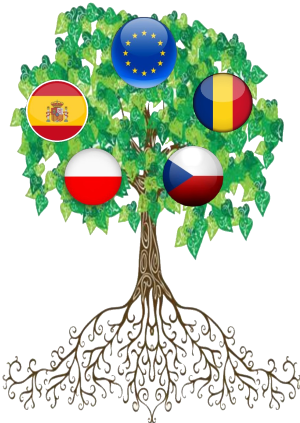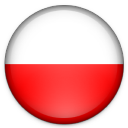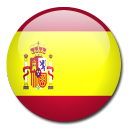

Pilsen
Chanovice
Přerov nad Labem
Rožnov pod Radhoštěm
Pilsen
historical city, was founded in 13th century on the confluence of 4 rivers with many sites – gothic cathedral, renaissance city hall, Jewish synagogue. Nowadays it is a modern city with strong industry. Plzen is also called Pilsen in English and German, is a city in western Bohemia in the Czech Republic about 90 kilometres west of Prague, it is the fourth most populous city in the Czech Republic with 170 000 inhabitants. The city is known worldwide for Pilsner beer, created in 1842. There are many schools – primary, secondary and West Bohemia University.
SOUE (high and vocational school of electrical engineering) is a technical school for students between 15 – 19 years old – about 600 daily students and about 200 distance – adults. Branches of study except electrical engineering are also telecommunication and information technology. Students have theoretical lessons at school and practical lessons at school special labs or companies. The school operates the hostel and canteen.
Pilsner Urquell is the world’s first-ever pilsner type blond lager, making it the inspiration for much of the beer produced in the world today, many of which are named pils, pilsner and pilsener. We chose this company for several reasons – first the beer brewing certainly belongs to the Czech important traditions. But the second reason is that the brewery keeps also tradition – coopering – making wooden barrels by the original technique. One of the barrel makers is Mr Josef Hrůza (the bearer of traditions – mentioned later in the report). The whole process of making beer is quite fascinating. One needs barley, hop and fresh water. All the ingredients are available in the environment of the Pilsen city and the knowledge how to do this, is passed on from one generation to the next.
Plasy
The Centre for Building Heritage in Plasy which takes its visitors through the entire brewery grounds and acquaints them with historical construction components, materials and structures in a comprehensible and attractive manner. The exhibition presents visitors with various construction materials (timber, stone, clay etc.). The brewery’s individual floors house displays of construction structures from foundations and the building frame through different treatments of wall surfaces, types of windows and doors, relevant technical facilities of buildings to types of roof timbers and coverings.
Chanovice
The village of Chanovice is the centre of cultural heritage of this region. There you can find a nice church, a castle where nowadays a primary school is located, a small museum of crafts, an exhibition hall and a gym. But also there is a big reconstructed granary which serves as a depository for the Museum of. Dr. Hostaše in Klatovy. There you can find thousands objects from village and agricultural life of this region.
The exhibiton – “GALLERY of Bearers of the folk craft traditions” - Chanovice The permanent exhibition from the production of excellent Czech folk craftsmen is in the castle ground in Chanovice. The project Gallery Bearer of the folk craft traditions has its aim to present publicly the best domestic manufacturers in the field of folk arts and crafts to the Czech and foreign visitors: there are introduced the award-winning title craftsmen, the presentation of their skills and production, which follow the original and traditional technology, but also about a form of social evaluation. The title Bearer of the folk craft traditions can be granted annually up to five producers, who will be recommended by a commission of experts appointed by the Minister of Culture. The selection shall take into account the exceptional skills of the candidates, the risk of extinction of certain technologies, the aesthetic value of the work and also the skills of nominated craftsmen for teaching their followers. Proposals for candidates can be submitted by scientific and technical institutions, museums, civic associations, individuals active in the certain field and state and local governments, etc. Proposals are sent to the National Institute of Folk Culture in Strážnice by the end of the previous calendar year. Opening the exhibition to the public and its completing contributes to fulfilling the government resolution “The concept of effective care for the traditional folk culture”, but also to promote the international UNESCO project "Living Human Treasures".
The open-air exposition in Chanovice is aimed to present the period style of housing, the agricultural activity, home craft production and trades in a village of the second half of the 18th to the first half of the 20th century. It was declared a village zone on 1 January 2005 thanks to many young people of the Pilsen region who did and still do voluntary work during the weekdays and school holidays. The skansen is a part of the Museum in Klatovy, the region town in the south-west Bohemia. It is spread in about 1.5 ha of land in the village Chanovice and now you can see 15 structures there. The Exposition of Popular Architecture is a rescue project for endangered objects in the territory of youth-west Bohemia. The museum is applying for grants and contributions; some financial support has been gained also as so-called sponsor donations.
Four workshops in the open-air museum in Chanovice: wooden toys, pottery, carpenter, corn husk decorations. Mr Drhovský (one of the bearers) showed how wooden toys were made. All participants tried this and could take home a made toy – a small horse. They painted it as they liked. Mr Volf (also one of the bearers) took a small potter´s wheel and participants could make a small bowl. Mr Kodýdek (caretaker of the Chanovice skanzen) showed different carpenters ‘tools and techniques. Volunteers tried some of the techniques like cutting, carving and peeling bark. Ms Sieberová showed the handmade making of corn husk decorations and again all participants made a bird from corn husk. Teachers divided students into international teams and they step-by step participated in all workshops. Czech teachers and Czech students helped with translating.
Prerov nad labem
The Polabian Ethnographic Museum in Přerov nad Labem is located in the middle of the village near the capital city Prague in the central part of the CR. It illustrates the life in the Polabian village from the middle of the 18th century until the first half of the 20th century. The exhibition object, adapted to the "old Bohemian cottage", was first made available to the public in 1900. It is precisely this date that the Přerov Ethnographic Museum is the first of its kind in Central Europe. After the pause caused by the wars, the newly opened museum was initially conceived as a rescue open-air museum of folk architecture and folk art. At present, the open-air museum in Přerov nad Labem consists of three complexes, representing the historical development of the museum in nature and the character of older and younger middle-class people. Visitors can get acquainted with old Bohemian timbered cottages and small buildings (monuments, wells, milestones, bell tower, etc.) and the manor houses standing at the local chateau (the old school and the hunting lodge) of the Central Bohemia region. There we saw the workshop hand wool processing from sheep to the products which was prepared by the workroom which employs mental handicapped people. Prague is the capital and largest city of the Czech Republic. It is the 14th largest city in the European Union. It is also the historical capital of Bohemia. Situated in the north-west of the country on the Vltava River, the city is home to about 1.4 million people. Founded during the Romanesque and flourishing by the Gothic, Renaissance and Baroque eras, Prague was the capital of the kingdom of Bohemia and the main residence of several Holy Roman Emperors, most notably of Charles IV (r. 1346–1378). It was an important city to the Habsburg Monarchy and its Austro-Hungarian Empire. The city played major roles in the Bohemian and Protestant Reformation, the Thirty Years' War, and in 20th-century history as the capital of Czechoslovakia, during both World Wars and the post-war Communist era. Prague is home to a number of famous cultural attractions, many of which survived the violence and destruction of 20th-century Europe. Main attractions include the Prague Castle, the Charles Bridge, Old Town Square with the Prague astronomical clock, the Jewish Quarter etc. Since 1992, the extensive historic centre of Prague has been included in the UNESCO list of World Heritage Sites. Prague ranked sixth in the Tripadvisor world list of best destinations in 2016. Its rich history makes it a popular tourist destination, and the city receives more than 6.4 million international visitors annually.
Roznov pod Radhostem
The idea of an open air museum was not originated from townsmen´ or spa guests´ minds. It was the idea of the Jaronek brothers, particularly the elder, Bohumír. They came from Malenovice near Zlín of a poor family which took interest in art craft – father was a dyer, one uncle made church organs and so on. Bohumír studied at the secondary school in Nový Jičín, and during an excursion to the neighbouring small town of Štramberk his interest was fixed on Wallachian timbered cottages. Later he travelled over the world as a painter on porcelain, photographer, painter and graphic artist. In his diary we find notes from Cairo, Dubrovník, Budapest, Munich and other cities. But it was important for him to visit the Ethnological Czech-Slav Exhibition in Prague in 1895. The most attractive and remarkable part was the representation of an exhibition containing folk buildings from the region of Wallachia, designed by an architect Dušan Jurkovič. The famous inn „On the last penny", where the Wallachian musician Pelár´s band played, stood there, too. Bohumír also visited the millennium exhibition in Budapest where folk buildings from all over Hungary were displayed. In 1909 the brothers settled in Rožnov for good. The idea of an open air museum was already maturing in their minds, inspired by efforts to preserve the houses on Rožnov square, and the journey of Alois Jaronek to Scandinavia showed them the way. He visited the newly installed open air museum in the town of Aarhus in Denmark and also inspected the first open air museum in the world, the Stockholm Skansen. The expression of the first open air museum in the world, Skansen, is used both abroad and in our country for any open air museum. The Swedes themselves use the word „skansen" only for their oldest open air museum because the museum was established on the site of ramparts which is called „skansen" in Swedish. In 1911 the museum society was founded in Rožnov and in 1913 the first plan of the museum was worked out. The war put a stop to plans however, and they could be materialized some years later. The Jaroněk brothers and the society made use of the situation when the first folklore festival called the „Wallachian year" was being prepared in Wallachia in 1925. They promoted that the festival was held on the grounds of the newly installed open air museum, where on a clearing in the spa park, two large houses from the square – the town hall and the town house from the mid-18th century – and several small structures had been erected. In 1928 the old inn, dating probably from the 16th century, had been added, and when Bohumír died in 1933, a copy of the mayor´s house from Velké Karlovice was built. During the World War II a group of carpenters under Michal Fabián erected a wooden church, using plans of the church in Vetřkovice near Příbor which had burned down in 1878. Thus the first stage of the development of the Wallachian Open Air Museum was completed. The original part was later called the Little Wooden Town. The plan of the second part- the Wallachian Village- was made in 1950s and realized in the following decade. The aim of its development was a truthful reconstruction of the model of the Wallachian village. And so on the clearing „On the hillside" above Rožnov, 40 structures belonging to a typical Wallachian village were erected. The construction of the third part of the Museum- the Watermill Valley- which was launched in 1982, was an even greater challenge to the builders. It was not just a matter of erecting a flour mill, a saw mill, a wool mill and a forge but also incorporation them into the village to give a picture of the social conditions and life of the workers in the villages. The most important feature at present is the aim to revive the forgotten traditional technological methods, folk art and customs and the reconstruction of social life, trades and ways of entertainment of our ancestors. The great attention is paid to farming. The traditional plants are gathered with traditional technologies. Sheep milk and wool are also processed in the old way. Added to all there are over one hundred old kinds of fruit trees and an even greater number of ornamental flowers´ types cultivated in Wallachia as well as the „Matocha´s" farmstead with its almost full livestock of all kinds of farm animals. The second circle of activity is the domain of folk art and folk artists who exhibit their articles for sale and demonstrate their skills in front of numerous museum visitors. The Museum helps to keep the old traditional skills alive, and it is good to find that young people learn and develop these arts. The third sphere, folklore and customs etc., has won the greatest popularity. The Museum arranges traditional folklore festivals with performances by folk ensembles and authentic interpreters of folklore. The best known events are the „Rožnov Festivities" and the „Oldtime Fair". Thus the Rožnov Museum fulfils a wish of its founder, Bohumír Jaronek that the Museum should be living.




